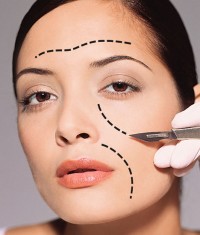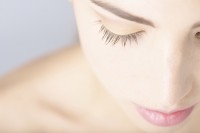Face

Many people come to the realization that how they look and how they feel are years apart. Heredity, lifestyles, and exposure to the sun all affect the way we age. A facelift corrects the most visible signs of aging, removes excess skin, contours the jawline, and redistributes the facial volume to such areas as the deep cheek folds (nasolabial folds.) Bone structure and skin texture play a big part in how many “years a facelift can remove.” The ultimate goal of a facelift is to provide a “natural” more youthful look. The incisions are hidden as much as possible in the hairline or behind the ears. Some patients also undergo a forehead lift and/or eyelid surgery at the same time to create a total uniform result.

Wrinkling in the forehead and brow area is often the cause of the “sad, tired, or aging” look that is associated with aging. A forehead lift is designed to improve the skin wrinkling, and loss of skin tone that causes sagging of your eyebrows and hooding of your upper eyelids. This procedure will also soften the deep horizontal creases in your forehead, and the vertical lines between your brows. Forehead lift incisions are made in the top of the scalp, hidden within your hair. To maximize the degree of rejuvenation, a facelift is often performed along with a forehead lift.

The popularity of eyelid surgery is not surprising given the eyes are considered the windows to the soul. Wrinkles, puffiness, under eye bags, and drooping lids all contribute to the “tired or aged look.” Depending on the problem area(s), your surgeon may choose to perform surgery on the upper and/or lower lids. Excessive skin is excised and fat pads are removed through incisions hidden in the natural crease of the upper eyelids and along the lower lash lines. The result is a more youthful appearance. This procedure can be done under local sedation.

The nose being the center of the face, is an important focal point. Rhinoplasty can recontour, reduce, straighten, or even build up the nose so that it compliments the other facial features. In addition we want to respect the physiological importance of the nose as an essential part of the breathing mechanism. Besides correcting the external features, internal nasal deformities that can contribute to breathing problems can also be addressed. Rhinoplasty,or nose surgery is one of the most common aesthetic procedures and can be performed under general or local anesthesia. Following surgery a splint may be necessary for a week. There may also be some discoloration and bruising that will continue to fade over a couple of weeks.

Otoplasty, more commonly referred to as ear surgery, can correct developmental deformities of the ear such as prominent or large ears. Otoplasty surgery can restore proportions and bring the ear elements into harmony. This surgery is best performed between the ages of five and fourteen, (the ears having achieved their maximum growth by age five.) However, it can also be done in adults. Otoplasty surgery can be performed under local anesthesia with sedation or general anesthesia. Within a few days after surgery the dressings will be changed and a headband that covers the ears gently will be worn. Incision sites are hidden behind the ears.